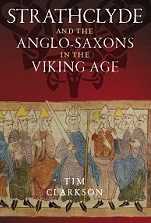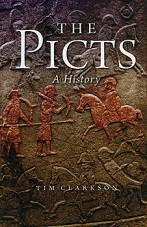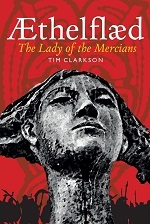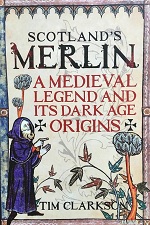
Early medieval cross-slab at Govan, re-used in modern times when it was inscribed with the initials A.R.I.R. From Stirling-Maxwell’s Sculptured Stones in the Kirkyard of Govan (1899).
There is little doubt that the kirkyard of Govan Old Parish Church was a burial ground for the kings of Strathclyde from the ninth to eleventh centuries AD. Some of the surviving carved stones may have marked the graves not only of the kings themselves but also of other members of the royal family – queens, princes and princesses.
Although we cannot identify any particular stone as a royal grave-marker, the chances are that the largest and most ornately carved examples represent this category: the hogbacks, the Sarcophagus, and perhaps some of the finer recumbent slabs.
In this blogpost I’d like to indulge in some idle musing on a specific question: how many queens of Strathclyde were buried at Govan? It’s a question that cannot be answered with any measure of certainty, but it’s probably worth a rough guess. I started to think about it a few weeks ago, while writing about a much earlier princess of the kingdom.
My starting-point is a list of kings who ruled the Clyde Britons from 870 onwards. In that year, the old royal stronghold at Dumbarton was sacked by Vikings and the centre of the kingdom moved upstream to Govan and Partick.
The following list can also be viewed in ‘family tree’ format in an older blogpost.
Artgal, son of Dyfnwal [slain by Vikings in 872 while being held captive in Dublin]
Rhun, son of Artgal [married to a Pictish princess]
Eochaid, son of Rhun [king of the Picts c.877 to 889, but may have ended his days in Strathclyde as king of the Britons]
Dyfnwal [possibly a brother, son or nephew of Eochaid]
Owain, son of Dyfnwal [fought at the great battle of Brunanburh in 937]
Dyfnwal, son of Owain [died 975. His queen is the subject of Jim Ferguson’s story The Bride Of King Dyfnwal]
Mael Coluim (‘Malcolm’), son of Dyfnwal [died 997]
Owain, son of Dyfnwal [died 1015]
Owain ‘the Bald’ [fought at the battle of Carham-on-Tweed in 1018]
Mael Coluim [a prince of Strathclyde, perhaps a son or grandson of Owain the Bald, he briefly replaced Macbethad (Macbeth) as king of Scotland in 1054. Possibly ended his days in Strathclyde as king of the Britons – maybe as their last king?]
If the bones of the above men lie in the churchyard of Govan Old, then it’s a reasonable inference that their wives are also buried there. This would give us a rough figure of 10 graves of queens, without taking into account the possibility that some kings were married more than once, and without allowing for other variables (such as burial in another cemetery). Unfortunately, we don’t know the names of any of these women.
* * * *
Note 1: Princesses
Queens would not have been the only royal females buried at Govan. The churchyard undoubtedly holds the graves of princesses – sisters and daughters of kings – but we cannot even venture a wildly approximate guess at their numbers. Some princesses would have been betrothed to men in neighbouring kingdoms via political marriages arranged by their respective families. Their graves presumably lie outside Strathclyde, and in some cases outside mainland Britain. Others would have been married to powerful noblemen within Strathclyde, in which case their graves could lie in distant corners of the kingdom, far from the church at Govan where they would have worshipped as children.
Note 2: Artgal’s queen
Assuming that King Artgal’s wife was captured at the siege of Dumbarton and taken as a high-value prisoner to Viking Dublin, she may have died alongside him when he was murdered there in 872. If, however, she was released alive (perhaps after being ransomed by her son Rhun) she may have seen out her remaining years at the new royal settlement in Govan, where her grave might even be the first female royal burial in the churchyard.
Note 3: Rhydderch’s wife
Rhydderch, son of the Dyfnwal who died in 975, is omitted from the above list of kings because the historical record suggests that the kingship passed to his brother Mael Coluim. No source calls Rhydderch a king, so I’m assuming his wife wasn’t a queen. In 971, this couple were hit by tragedy when their daughter was raped (and possibly murdered) by the Scottish king Cuilen, whom Rhydderch later killed in revenge.
* * * *
References
Alan Macquarrie, ‘The Kings of Strathclyde, c.400-1018’, pp.1-19 in A. Grant & K. Stringer (eds) Medieval Scotland: Crown, Lordship & Community (Edinburgh, 1993)
Tim Clarkson, The Men of the North: the Britons of Southern Scotland (Edinburgh, 2010), pp.159-93 [on the kingdom of Strathclyde]
* * * * * * *







